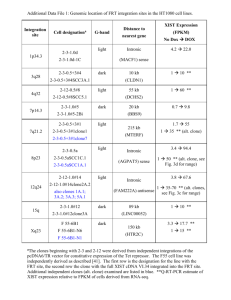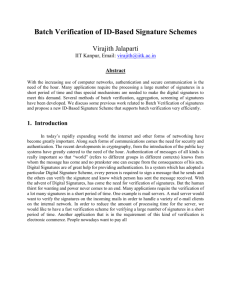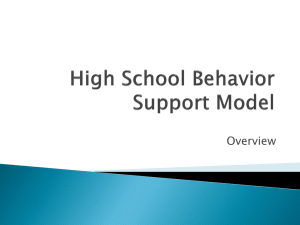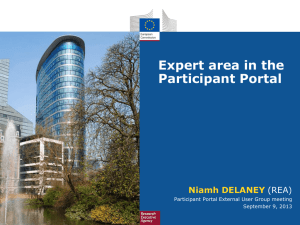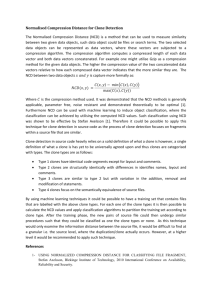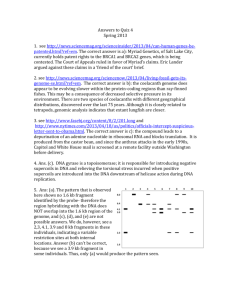Symptomatic Analysis for Software Maintenance
advertisement
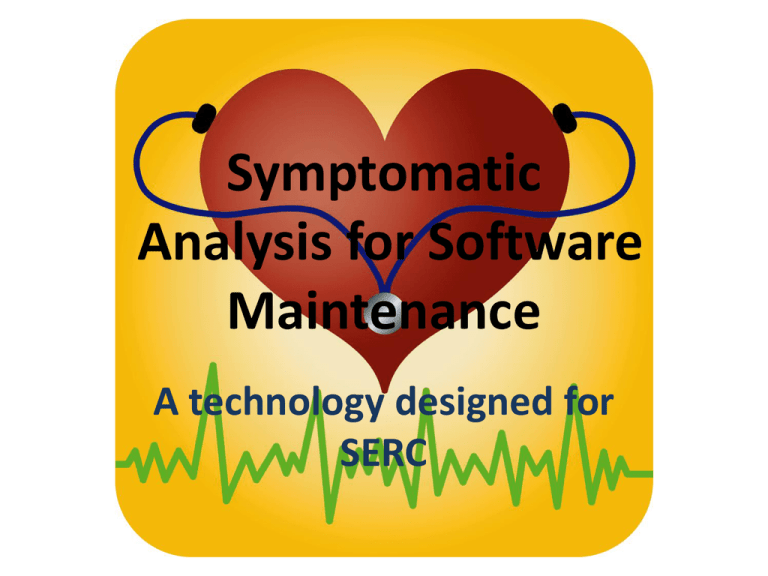
Symptomatic Analysis for Software Maintenance A technology designed for SERC Symptomatic Analysis for Software Maintenance GOAL Development of a diagnostic and prognostic system for software that collects data from various types of sources and applies special analytical techniques to analyze the data in real-time to diagnose problems, discern impending faults, and identify maintenance procedures. Most Complex Living Organism Maintenance (heath management): checkups and diagnosing illness Most Complex Product Built by Humans Maintenance: (no health management) fixes and updates Today’s Software Maintenance Realities • Cost of maintenance is very high. • A system not designed for maintenance cannot have maintainability retrofitted later. • Many different opinions of maintainability. • Each organization develops their own definition and concentrates on efforts to develop mature production processes. • Process maturity is not enough to guarantee the quality of a specific software product. – Process evaluation should always be accompanied by product evaluation. – PRODUCT CERTIFICATION IS ALMOST NON-EXISTENT ! What can be observed (learned) from health maintenance? • Continuous • Relies on a large number of facts obtained • Reaches an accurate conclusion depending on the timing and the sequence of the symptoms • Case history remains an important tool to determine the nature of an illness Future with Symptomatic Analysis for Software Maintenance • A holistic infrastructure approach ( similar to Health Management) • Continuously measures and evaluates software products through intelligent, automated diagnostic and prognostic programs • Provides feedback to process and product improvement by imparting practitioners with an understanding of the condition of their software today and an assurance of its operational state tomorrow. The Foundations for the Symptomatic Analysis Process Based on the design metrics research of 18+ years through the SERC Design metric analysis Module Signatures Time-slices Clones Error (change) analysis The design metrics have been computed on o o o o o o o o Raytheon defense systems CSC’s STANFINS project systems from the US Army Research Lab Magnavox’s AFATDS project Harris’ ROCC project three Northrop Grumman projects PBX system from Telcordia Technologies telecommunications systems from Motorola Results: The design metrics typically identify 90% of the fault-prone modules. Module Signature Algorithmic classification No incomplete or inconsistent data A single metric can provide insight into product or process. However, in isolation this is seldom useful. Tougher questions usually need more information. Module Signatures Example (De, Di, V(G), LOC) Then the module signature is a 4-tuple, perhaps (1,1,0,1) or equivalently, 13, since 11012 = 1310 Module Signatures • 2 studies • 98.5% accuracy in identifying changeprone modules • False negative were only at ½ percent! • Classes with “more” changes have more “1s” in the signature • Signatures have the potential to predict the likely number of changes for a given module Time (Phase) Based Analysis • Time-slice transformations on design metrics • Before & After Timeslices Clone Research • Clone evolution is a novel field • Current approaches are limited to detecting only small specialized set of patterns in a clone’s evolution and generally lack scalability • Empirical research suggests that some clones require higher attention than others • Our newest discoveries Symptomatic Analysis Architecture Examples of Merging and Extracting Data Module Signature 1011001 Module Signature 0110000 Module Name Module-1 Module-2 Module-3 Time Signature Clone .0.0.9.9.9 NO .0.0.0.64.64 NO .0.0.0.89.d NO COs 4 1 3 Module Name Module-4 Module-5 Time Signature Clone .0.0.44.44.44 yes 2022 .0.0.0.50.50 yes 2022 COs 3 1 Potential Benefits A holistic infrastructure approach, as applied through the framework, will allow intelligent, automated diagnostic and prognostic programs to provide practitioners with an understanding of the condition of their software today and an assurance of its operational state tomorrow. Questions?

